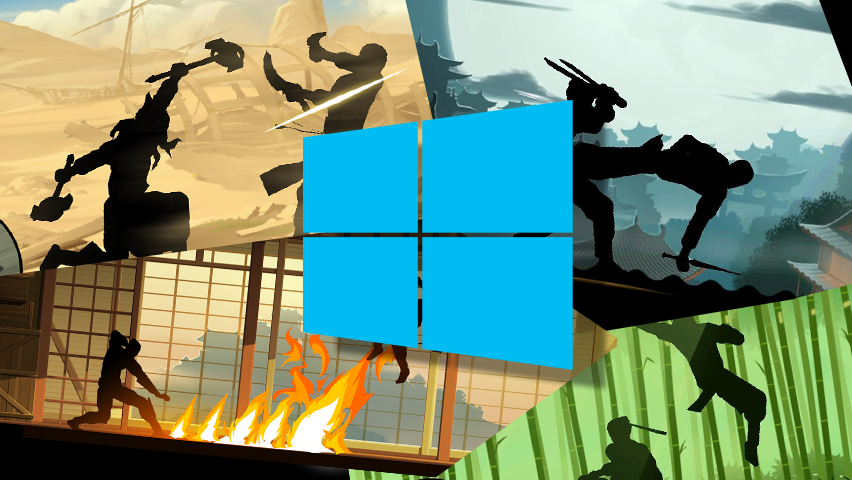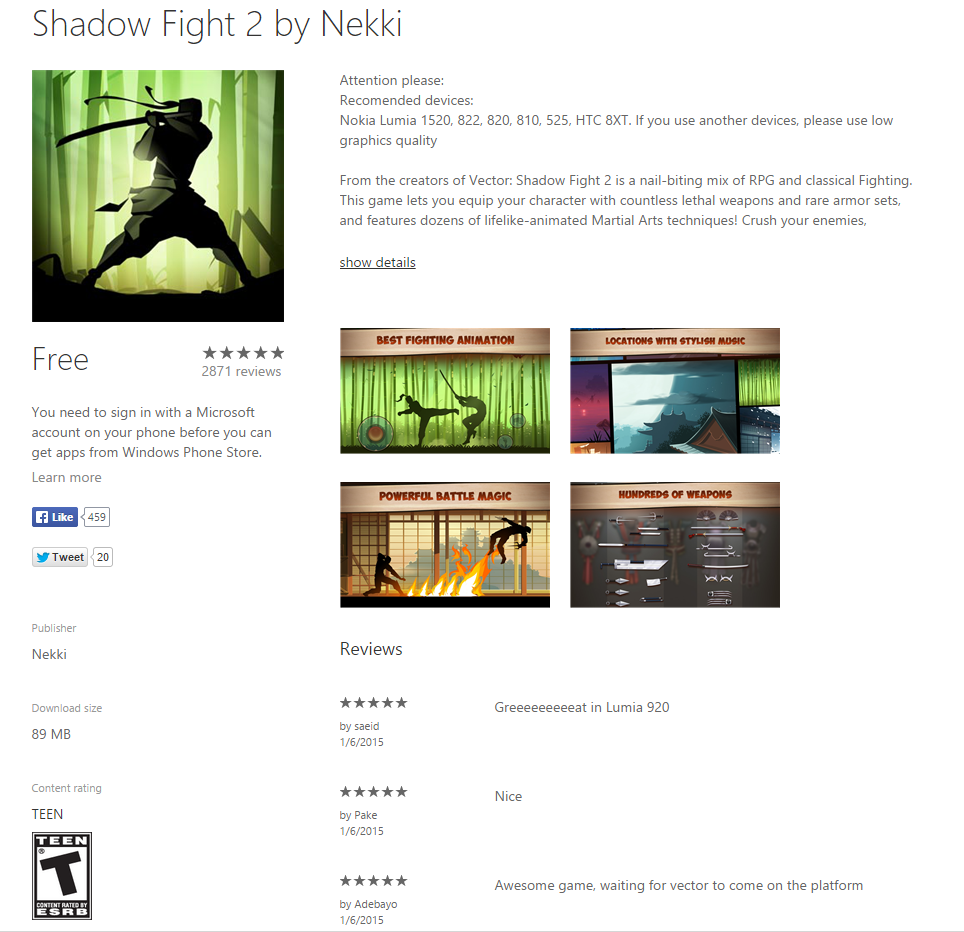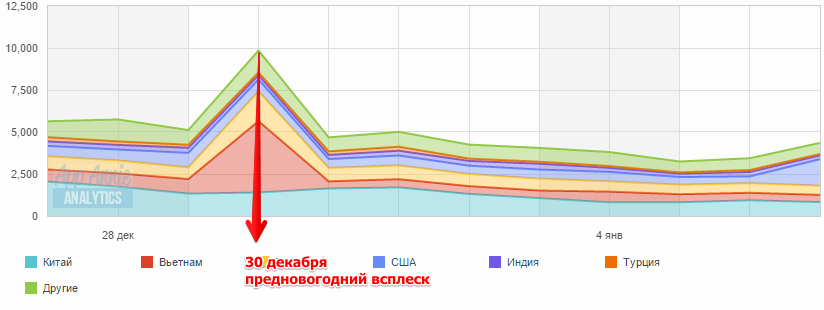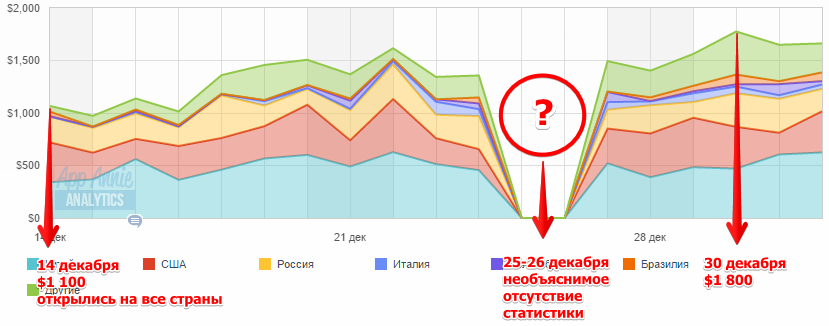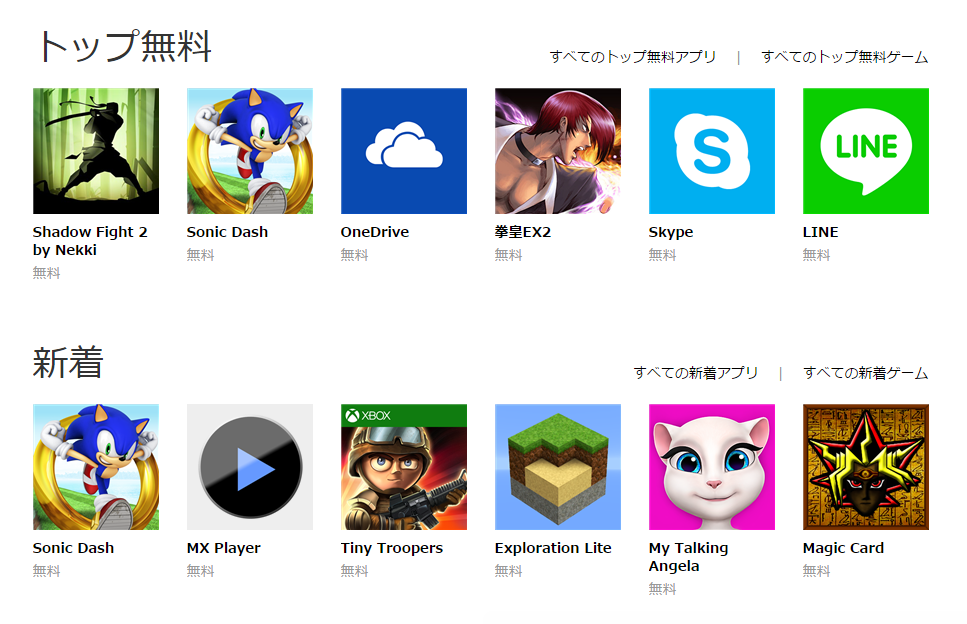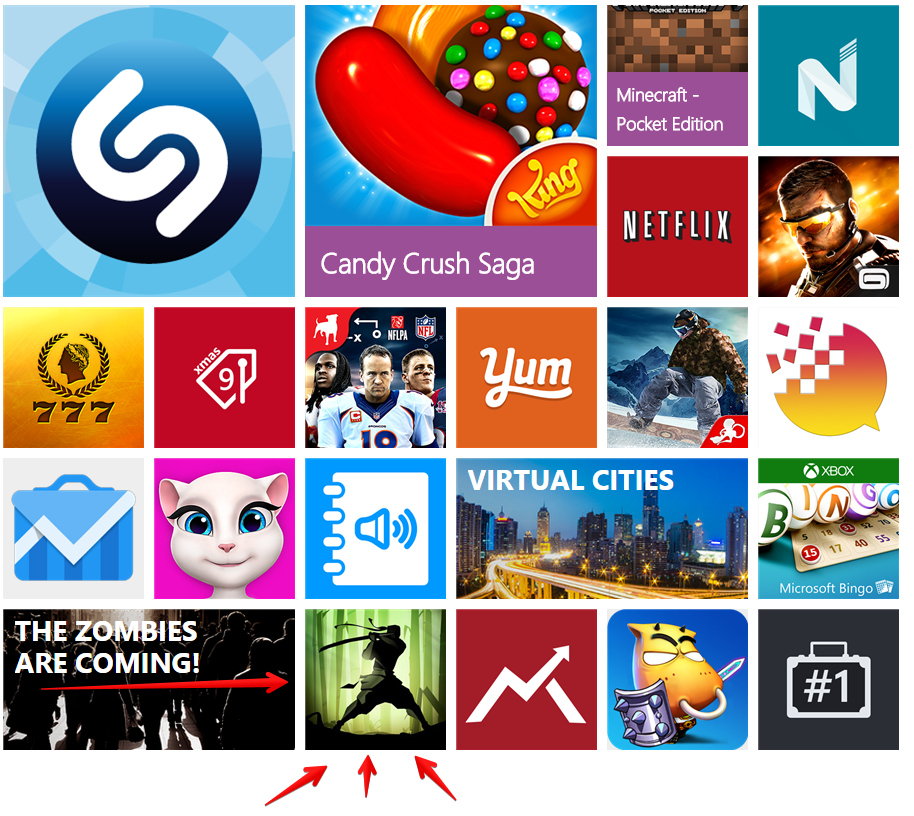How much a game on Windows Phone can earn, why it is better not to use the Russian market for a “soft launch”, what you should pay attention to when porting the game to WP, and many other things were told to us by Sergey Babaev, director of business development at Nekki.
To be honest, I have a biased attitude towards Windows Phone. Since 2011, everyone has been saying that the system will fire. But the only thing that has been successfully done during this time is the collapse of Nokia mobile. On the other hand, Stephen Ballmer is not at the helm today. So I’ll start with this question: what do you think about the system yourself?
Sergey Babaev
In general, regardless of Windows Phone, I am a stickler for a practical approach. Any platform and technology can be given one chance by investing uncritical resources (not the last money and not the strength of the last programmer in the company) in its study. If the experience justifies itself, then the platform for the company becomes one of the key ones, if not, it teaches us a lesson.
One of these lessons, for example, was obtained by us thanks to the launch of Vector on the Oyua console. We checked the technical capabilities for porting, studied how the game looks like on them and, most importantly, found out that there is no money on the “Oye”.
Of course, we could get such information from third parties, but the accumulation of relevant data from different studios and projects would require much more time. Sometimes even having enough information about the platform, it is important to understand how your project will behave on it.
Here’s another example: despite the good third-party reviews about Amazon, the platform turned out to be completely uninteresting for us.
Shadow Fight 2 is successful on iOS and Android, grows well without investing in marketing and is implemented on a multiplatform engine. And today our goal is to maximize the profitability of the title. Not to be visionary about the future of platforms and events that await us in a couple of years (which is also important and useful, but not in this particular case), but to bring the finished game to the maximum number of users.Even a cursory study shows that in several EU countries (Great Britain, Germany, France, Italy, Spain), the WP share ranges between 8 and 10%. Ignoring this audience, it seems to me, is unwise.
This summer I talked with some guys who assured me that one of the most important advantages of Windows Phone is that it is an ideal platform for a “soft launch”. Does it really make sense to consider WP in this capacity?
We obviously went the other way, so here you can only make assumptions or retell other people’s words, but I can’t share my experience.
Again, as far as I know, for many developers, transferring a particular game to WP (especially as a temporary exclusive) is a great way to make relatively little guaranteed earnings, since Microsoft pays some for this. The question is, how realistic is it to put such a practice on stream, and what figures are we talking about?
I know two directions: grants from Microsoft and certain conditions for exclusivity.
We discussed grants with indie developers at the Moscow DevNight. Yes, Microsoft sometimes funds teams that make or port games to Windows Phone. In my opinion, this is a useful initiative that simultaneously helps independent teams and improves the store itself. If you are a small independent developer, then WP and the Microsoft grant system can be an impetus to adulthood – they will help you financially, support the project in the store and give you a number of tips. Read more here and more here.
As for paying for exclusivity, we are probably talking about large established companies and significant amounts. There are no such companies among my friends, so I won’t say anything new. However, the prospect of systematic earnings on this does not look very realistic.
But I have a negative attitude to attempts to turn grants into “guaranteed earnings”. The company should make money on the fact that users like the project, no matter what it is expressed in – in the promotion of advertising to a large audience, good F2P monetization or in a fixed price per jump. Trying to cover up failures with constant subsidies is a bad idea, taking the studio’s focus away from real goals and creating an artificial sense of stability.
Before the holidays, you launched your blockbuster Shadow Fight 2 on WP. Have you ported it for a long time?
The “Softlonch” for several countries took place in November. And the global launch was already in December, yes.
Porting the technical base took 1 person-month of the programmer. It took about half a month for some specifics: they squeezed out the desired FPS (which eventually turned out to be uncritical for users). This is all “spending” on porting. If the game was based on Unity, I think we would have cut the time in half again.
How has porting paid off? What results has the game achieved on Windows Phone in terms of downloads and revenue?
I’ll probably start with downloads. In mid-November, a softlonch was held for 4 countries: Russia, Canada, Japan and India. It was planned to add Brazil to this pool, but they did not have time to get a rating of a local rating organization by the scheduled date. During the softlonch period, the project grew by 1,500 installations per day.
A couple of weeks later, they opened to all countries. Let’s take a look at the graph from App Annie:
Opening to all countries on December 14th instantly gave us 28,000 installations. Gradually, the number of installations per day fell until December 17th, when the guys from MS activated the features on the main store. Then we almost returned to the indicators of the first day of release, taking the mark of 27,000 installations.
Then a few days he observes a kind of plateau and again an increase, already small, on December 22. Additional point features in Italy, India, Vietnam and a couple of other countries have shown themselves.
Starting from December 27, the installations reached a plateau. The graph looks like this:
Interestingly, before the New Year we received 10 thousand installations, of which almost 4 thousand were in Vietnam (usually there are 400-500 installations in the region).
The “settled” number of installations per day is 4-5 thousand. Without holidays, features and other “surprises”, the increase is about 120-150 thousand users per month. With “surprises” – 200-250 thousand. At the moment, the Windows Phone version has collected 250 thousand installations.
Earnings are also better illustrated on AppAnnie charts:
The schedule covers half a month from the moment of opening for all countries until the end of the year. On the first day (December 14th), the income was $1,000 and gradually grew to $1,800 (December 30th). Alas, two days (December 25-26) there was a crash in App Annie and there is no information for this period. Internal statistics show that revenues were also at the level of $1,500.
In January, the dynamics of income remained and is in the range of $ 1,500 – $ 1,700.
We can roughly predict that the income for January will be $ 50,000, which, at the current exchange rate of the ruble to the dollar is approximately 3.1 million rubles. We have no marketing expenses on the platform, and no specific support efforts are required either. Considering also the very modest costs of the transfer itself, I consider this “fuss” more than justified, profitable for the company and correct from the point of view of operating the title.
We also expect further revenue growth, up to $100,000 per month (i.e. in the region of 6 million rubles). The upward trend is noticeable, the project has not yet spent a full month on the platform, optimizations for weak devices are continuing (now this is a noticeable problem) and the potential of features has not yet been exhausted.
And separately for the leading markets (where the game proved to be the best) can you give detailed information?
The TOP 3 countries in terms of horse racing and income are China, the USA, and Russia.
- China accounts for an average of 1,400 installations per day and $500 in revenue;
- USA – 800 installations per day and $300;
- Russia – 400 installations and $200.
Recently on Facebook, you noted that the game entered the gaming Top 10 in China and the Top 3 in Taiwan. At the same time, in Russia and in the USA, the project is slightly less successful (41 and 72 places in the top free games, respectively, as of January 9). What would you associate such success with in the eastern markets? And is there a similar trend in the App Store and Google Play?
Shadow Fight 2 was very warmly received in Asia and entered the TOP 10 of China, Japan, Hong Kong and Taiwan. I think the eastern setting and orientation, mainly on martial arts, played a decisive role here. Shadow Fight 2 demonstrates martial arts as we know them from Hollywood blockbusters, which partly explains why the seemingly “specific project” is successful in the USA, Canada, and Russia. But, apparently, our Asian users from among the owners of Windows Phone also have the necessary mentality for the correct perception of the game).
In terms of profitability, the Chinese iOS version of Shadow Fight ranks 4th in terms of money (but with a very serious gap from the USA and Russia) and 3rd in terms of installations among all versions of the game for the App Store. Japanese and South Korean Google Play are in the top 10 for us in terms of revenue. In general, we feel good in Asia on the main platforms, but they still do not prevail in the revenue structure.
If we talk about what places our game occupies in the tops, then both in Russia and in the USA the game reached very high indicators. In Google Play, the game was in first place by downloads, in the USA – in fourth.
Then why are we only in the TOP 50 on Windows Phone in Russia now?
In fact, we shouldn’t have included Russia in the list of soft-launch countries. This is an important region both in terms of money and audience. Not expecting to see extraordinary bugs, we nevertheless encountered performance problems on some devices. And while they remained, our rating and ratings were falling (they reached 2.5, it seems). As soon as we made the necessary corrections, the ratings improved in a couple of days (up to 4.5), followed by the rating. We got to the 20th place in the top, but since the end of December, a couple more problems have been revealed and the rating has been falling for a little more than a week. I think we will solve this problem and, at least, return to the second ten, as a maximum, we will get into the first.
How closely did you work with the Windows Store editors, how did you work with them in general?
We work closely, regularly communicate with Romuald Zdebsky, whom we first met at White Nights 2014. Roma contacted us with technical specialists when problems arose, helped with administrative issues and was very supportive of the project.
In addition to the main topic (launching SF 2 and Vector on WP), we are discussing other interesting features. For example, we agreed that in the near future Shadow Fight 2 will be included in a set of pre-installed games on powerful WP devices. In addition, Roman introduced us to his colleagues, with whom we are working on the coolest joint promo case. I can’t tell you the details yet – the veil of secrecy will open, probably, in February-March.
How much does the release and support of the project on the App Store, Google Play and Windows Phone differ? Are there any fundamental differences?
I won’t even mention the principles somehow, probably they just don’t exist.
Going back a bit, what difficulties did you encounter when transferring the project? Were there things that could have been solved much easier?
There are only our personal misconceptions (like the importance of 60 FPS for a new audience). But an interesting list of technical chips has not been formed. In general, Marmelade allows you to port to Windows Phone relatively quickly, but it would be easier with Unity (there are reasons to think so – both private experience and feedback from colleagues).
And the last question: what would you advise teams that are just looking at Windows Phone? What to pay attention to, is it worth porting at all?
If you are a small team that does not yet have a stable (albeit small) income, be sure to launch the project on WP. If you have already launched on iOS and Android – and everything is fine there, then you will also earn something on Windows Phone – a good game will not remain without attention. If the project has not already flown on the main platforms, try to launch on WP anyway: the competition on it is lower and it is easier to stand out in the “store”. Try to master three platforms (Android, iOS, Windows Phone) – so you will make sure that you have done everything possible, and in case of failure on each of them, or you will collect the maximum audience and income, in case of one or another success.
Also, several tips / reminders have been formed that will be useful to teams that have already decided to launch:
- when registering an account, make sure that you provide the correct legal data. It will be difficult to change them (unlike other stores). For example, MS does not transfer applications with IAP between accounts. You can update the legal data in your account only if the jurisdiction does not change, etc. Decide exactly which company you are registering an account for and will accept funds without leaving it for later. Then there will be problems;
- in some countries (for example, Brazil) you will have to get an age rating, which will take you some time. Be puzzled by this in advance so as not to move the previously scheduled launch date;
- do not include Russia in the very first set of countries for softlonch. This is an important country, it is not necessary to conduct “testing” on it.
- contact Roman and discuss the strategy of launching the game, as well as possible support from Microsoft;
- form the main pool of countries and ask for features for them. Features on Windows Phone last for several days and can be repeated on additional request.
Thanks for the interview!

